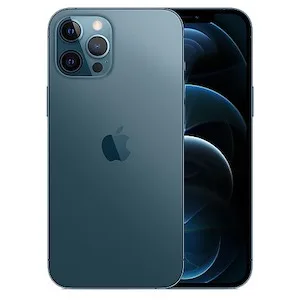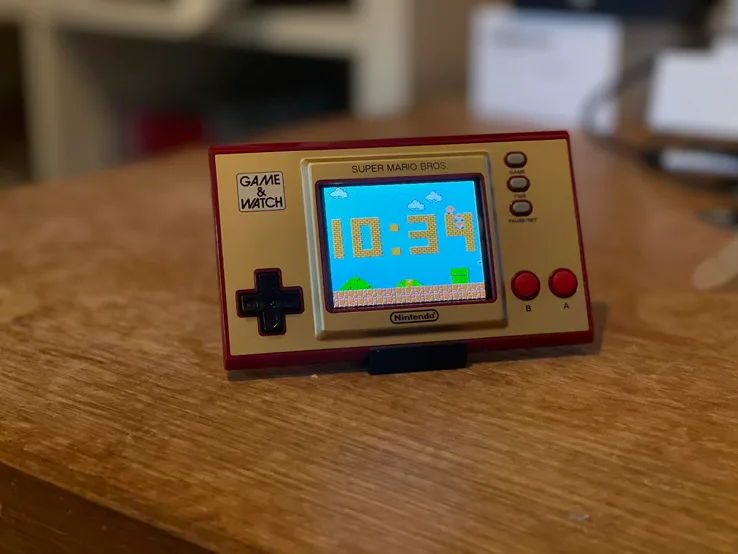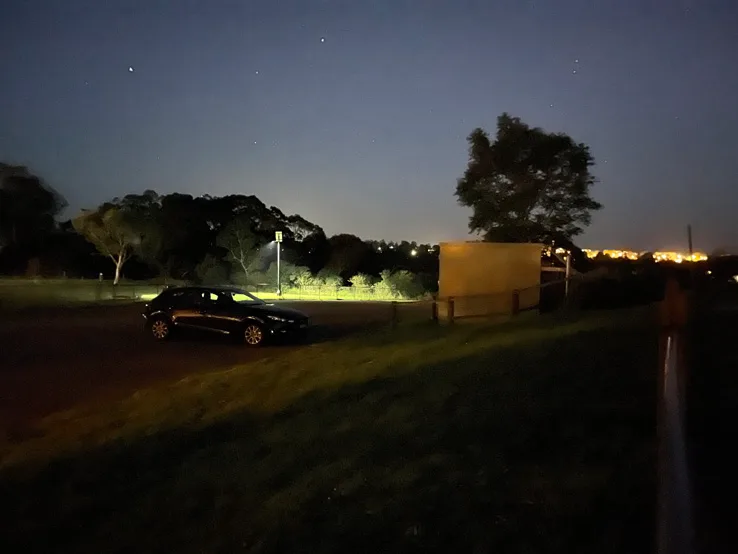Apple iPhone 12 Pro Max Review
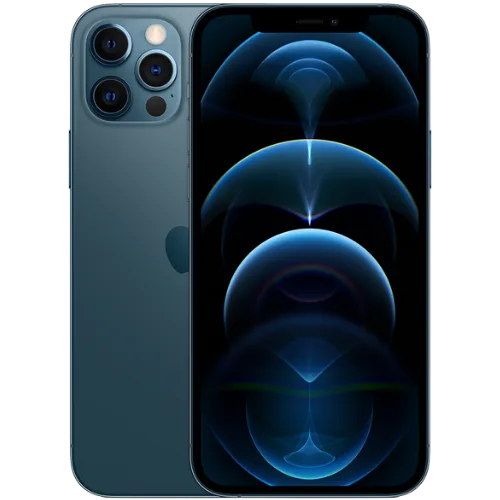
-
- Battery Score
4
- Camera Score
4.5
- Design Score
4
- Performance Score
4.5
- Battery Score
4
Summary
Quick verdict: The iPhone 12 Pro Max is a big phone – big in size, big in camera features and big in price – making it a phone only suitable for a small number of people.
- Best cameras in any iPhone to date
- A14 processor is very powerful
- Good battery life
- IP 68 water resistance and ceramic shield glass
- Very expensive
- Heavy and large
- iOS doesn't make the most of a large screen
- Aussies don't get the best 5G options Apple can make
Details
Pricing & Availability
| RRP | $0 |
| Launch date | 2020-11 |
There are really just two core reasons why you might want to buy the iPhone 12 Pro Max. It's Apple's largest iPhone for 2020, so if you favour a large-screened device, that's a factor, albeit one that Apple doesn't quite make enough use of.
That leaves the extended camera features on the iPhone 12 Pro Max and the promise of Apple's new ProRES format as the key selling point for the iPhone 12 Pro Max. You've got to weigh that up against its hefty price point, making this a phone only for a small niche of users.
Looking for the latest model? Here's our review of the iPhone 13 Pro Max.
Design
Design
- 6.7-inch OLED display impresses
- Heavy and large in the hand
- Ceramic shield glass
- IP68 water resistance
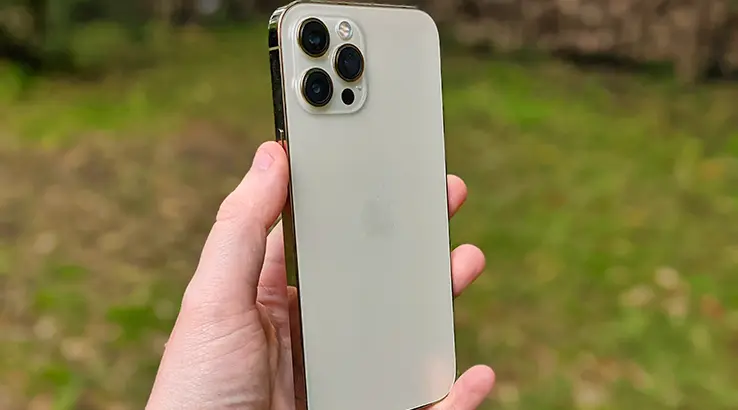
Like 2019's iPhone 11 Pro Max, the defining design aesthetic of the iPhone 12 Pro Max is size. At 160.8x78.1x7.4mm and 228 grams, this is one seriously hefty phone to hold in your hand. This is accentuated by Apple's design motif for 2020, which is a throwback to the older iPhone 4 design style with solid edges on every iPhone 12 model.
When you make a phone as large as the iPhone 12 Pro Max, that feeling is only accentuated, and if you have smaller hands or just don't like a larger phone to use, the iPhone 12 Pro Max really won't be for you. At a technical level, it features a superb OLED display with a 1284x2778 pixel resolution, although Apple doesn't make any particular considerations for its larger display size in terms of iOS features. More on that directly.
In colour terms, like the iPhone 12 Pro, you get a choice of four hues: Graphite, Silver, Gold or Pacific Blue stainless steel finishes. The Gold model that I've been testing looks much like the gold of previous iPhone models, save for on the exterior band where it's noticeably more shiny than last year's model.
Like the other iPhone 12 phones already available, at the front of the phone, you'll find Apple's special "Ceramic Shield" glass, which the company claims is up to 4x more drop resistant. The larger size of the iPhone 12 Pro Max does actually lend itself to more falls than you'd think. It's slipped out of my pockets a few times during testing or through my fumbly fingers, and so far, so good.
Keep in mind that while Apple says the screen glass is more resistant, there's no expansion of warranty cover in this respect. You break it, you'll pay for it, in other words.
That's a maxim that still also applies to the water resistance of the iPhone 12 Pro Max, which gets upped to IP68, or good for immersion up to 6 metres for up to 30 minutes. I've dropped the iPhone 12 Pro Max deliberately into some water and it's still kicking along, but again this isn't something you should push because Apple's warranty doesn't actually cover for water immersion damage. It's a little easier for me testing with a review phone supplied by Apple, after all.
The iPhone 12 Pro Max is a big phone, but like the rest of the 2020 crop, Apple keeps the box relatively thin by dint of not including either headphones or a charger in the box. All you'll get is a USB-C to Lightning cable, which does mean it'll plug into most modern MacBooks with ease. The flip side of that is that if you've got an older USB-A style charger, you'll need an adaptor to charge the iPhone 12 Pro Max.
Camera
Camera
- Triple 12MP cameras
- Zoom improvements feel light
- Low-light improvements are substantial
- Good for video shooting
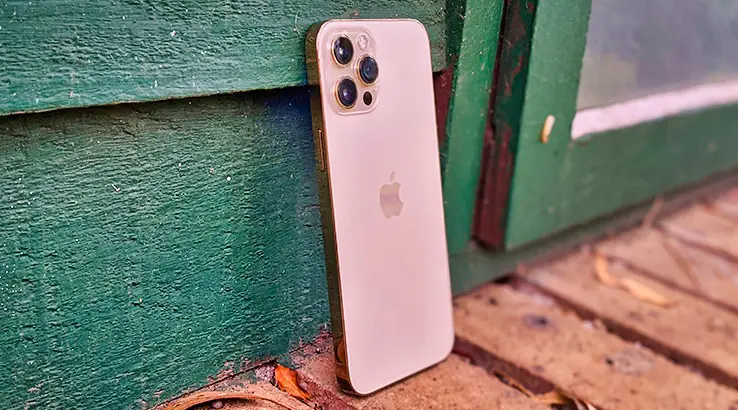
The single clear way that Apple differentiates the Apple iPhone 12 Pro Max from the iPhone 12 Pro is in the camera set-up, but you wouldn't notice that by simply looking at the rear of each phone. Both phones feature a triple 12MP sensor array, and in the case of the iPhone 12 Pro Max, what you're looking at is a primary 12MP f/1.6 sensor, a secondary 12MP f/2.4 and tertiary 12MP f/2.2 2.5x optical zoom lens.
There's an interesting technical trade-off at play here between the 12 Pro and 12 Pro Max. The iPhone 12 Pro Max has the largest zoom distance at 2.5x compared to the 2x of the iPhone 12 Pro, but the smaller Pro model has a larger aperture at f/2.0, which could make it a better performer in low-light situations.
It's further complicated by Apple's choices when it comes to internal sensor sizes, with the iPhone 12 Pro Max claiming to have the largest individual pixel sensor sizes on any iPhone to date, including the similar iPhone 12 Pro. It also benefits – or should benefit – from sensor-shift stabilisation, which places the stabilisation module on the sensor itself, rather than on the lens. That's the kind of feature typically associated with more pro-level DSLR equipment than smartphone cameras.
What does all of this add up to when you shoot with the iPhone 12 Pro Max? It depends on what you're shooting.
Apple's default camera app really is all about making the choices for you, which suits folks who just want to snap and get a pleasing photo most of the time. In that respect, with intelligent and relatively rapid post-processing and very fast focusing thanks to the inbuilt LIDAR sensor on the rear of the camera, the Apple iPhone 12 Pro Max shoots very well, no matter what lens you're using.
Just about anything in the mid- to high-range can shoot well under good conditions these days, but low light is an area where Apple has struggled to keep pace with the best Android phones over the past couple of years.
It's clearly a matter that it has taken seriously because the iPhone 2020 generation features the best low-light shooting I've ever hit in Apple phones to date. The issue here is that in real-world testing situations, the differences with those larger sensor sizes may not always be apparent.
To test that out, I took the iPhone 12 Pro Max, iPhone 12 Pro, iPhone 12, iPhone 12 Mini and iPhone SE 2020 – every single iPhone that Apple has released in 2020, in other words – to a local park late one night to pit their relative low-light shooting capabilities against each other.
The iPhone SE 2020 does not compare well, but that's to be expected, given it's basically an iPhone 6 with a much better processor engine under the hood:
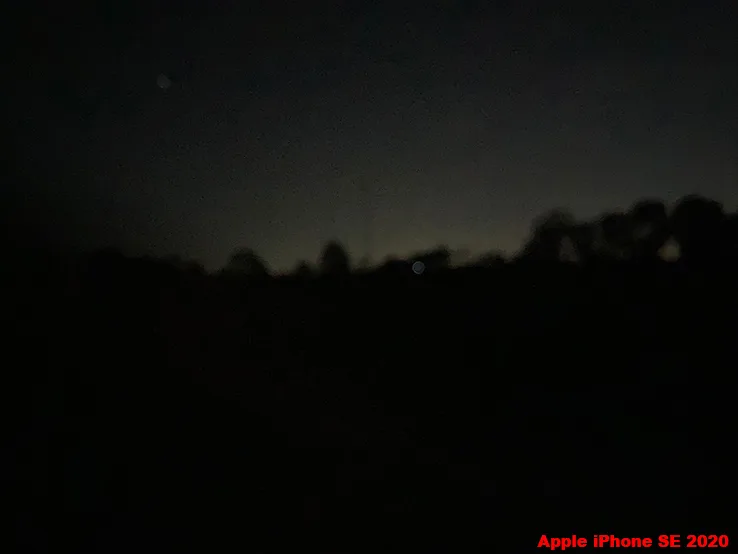
Moving up the price ranks, the iPhone 12 Mini acquits itself well and shows how far Apple has come:
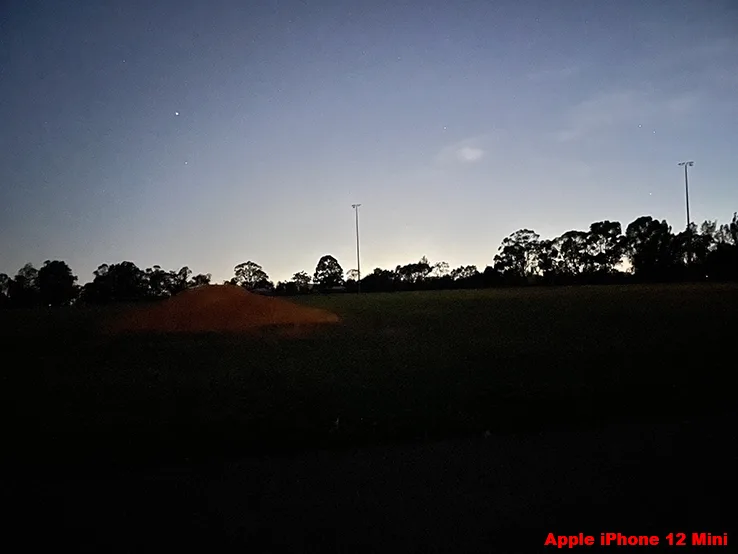
The iPhone 12 shares the same lens as the iPhone 12 Mini, but shot slightly better on the night:
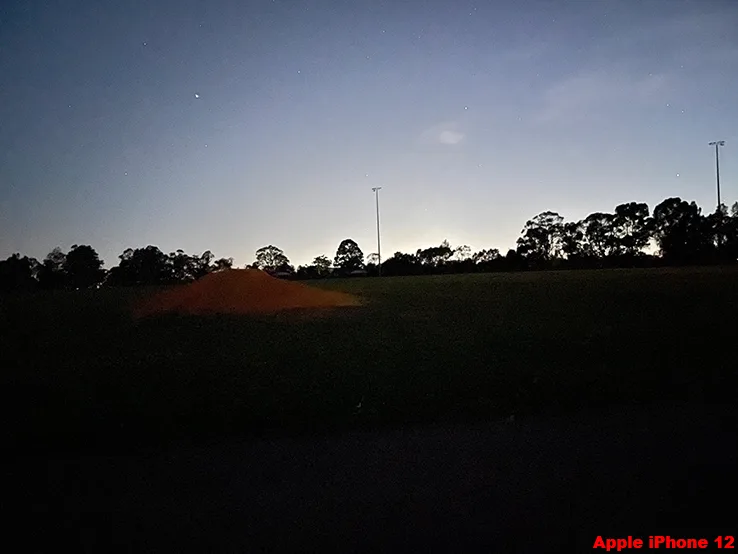
Stepping up the ranks, the iPhone 12 Pro shoots a little better again:
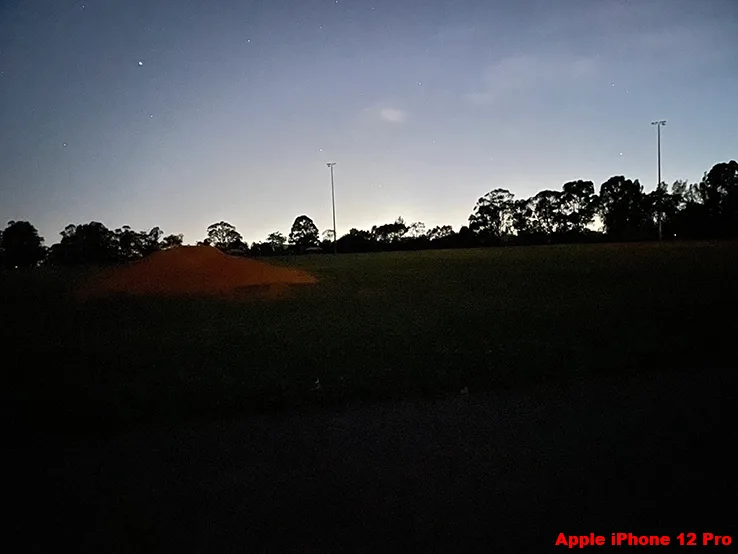
And finally, we come to the iPhone 12 Pro Max
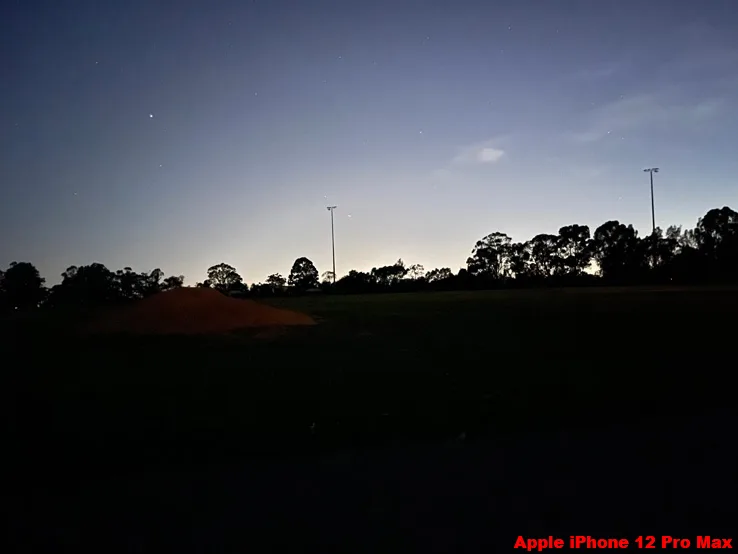
The differences end up being subtle – there's less noise in the sky for example, and the shot can't convey the fact that the iPhone 12 Pro Max focused faster than any other phone in this test, including the iPhone 12 Pro.
On the telephoto side, the 2.5x optical does give you more scope for close-up photography, but it's an area where Apple's still lagging behind the competition that has shifted to periscope style optical lenses with 5x or better magnification. The iPhone 12 Pro Max shoots well in telephoto and better than the other iPhones this year – but there's still scope for Apple to improve further.
Apple's iPhone lines have long been leading or in the top pack for video shooting, and the iPhone 12 Pro Max continues that standard, with support for Dolby Vision HDR video shooting at up to 60fps in 10-bit 4K HDR. Impressively, you can shoot and edit on the phone if you wish, although it's not hard to imagine most folks shooting at that level wanting to use external apps and displays to check everything is exactly as they want it to be. Video shooting is one way to clearly chew through battery life and heat up the iPhone 12 Pro Max, however.
The other trick up the iPhone 12 Pro Max's sleeve that's yet to emerge is Apple's new ProRAW standard. It's intended to merge the flexibility of RAW with the computational power of Apple's post-image processing in the one package format. The standard iPhone camera app won't shoot in regular RAW – although some third-party apps will let you do so – but once it's available, ProRAW should be available for the camera app and could significantly boost the iPhone 12 Pro Max's camera capabilities.
However, given it's not yet available, I can't really "review" it. Apple's track record in improving its cameras post-launch is pretty good, and there's a lot of promise in ProRAW, but as always, I can only review what a device can do when I'm reviewing it.
Performance
Performance
- A14 Fusion remains the industry's best
- iOS doesn't make much of the extra screen real estate
- 5G, but not Apple's best 5G outside the US
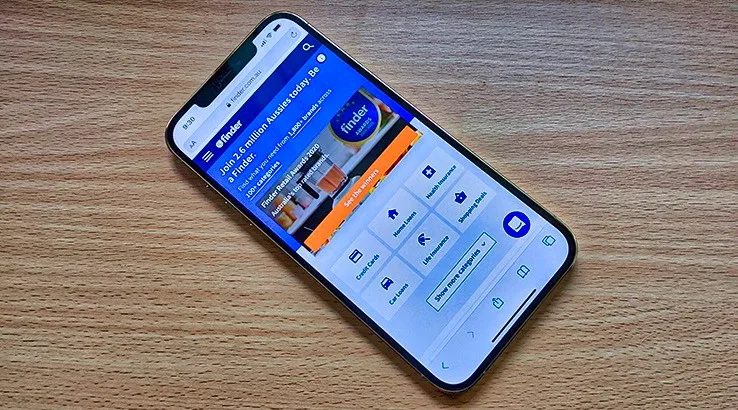
Apple's gone for conformity for its iPhone 12 line, dropping its new A14 Fusion processor inside every model from the tiny iPhone 12 Mini all the way up to the super-sized iPhone 12 Pro Max. That's good news in terms of performance for the lower-cost iPhones, but it does create the rather interesting scenario where there's really not that much of a perceptible gap between an iPhone that's only just over $1,000 and one that can easily tip the scales at over $2,000 depending on internal memory configuration.
Still, the iPhone's A14 Processor remains the processor for the rest of the industry to beat, and it's really not even close at a CPU level. The iPhone 12 Pro Max slightly outclassed its siblings in Geekbench's CPU test, which may relate to the 6GB of RAM that the Pro models enjoy over the 4GB in regular iPhone 12 devices. I've included Samsung's otherwise remarkable Galaxy Note 20 Ultra to give some perspective on how much of a lead Apple's got in this regard right now:
There's a little more variance when it comes to graphics performance, although I still really need more 3DMark Wild Life figures for a more complete cross-platform comparison:
I've made this observation in every single one of my iPhone 12 reviews so far, and it holds true for the iPhone 12 Pro Max as well. The power of the A14 Bionic is quite remarkable, but the reality is that outside of some very niche cases, such as on-device 4K video editing, there's not much that really pushes the processor to its limits just yet.
In some ways, it feels worse on the iPhone 12 Pro Max because it's got a lovely large screen that simply uses a four-column row of icons, same as any other iPhone. Uniformity is nice, but when you're pushing such a large display and such a capable processor, it'd be great to see more of a tablet-style focus on a phone that at one time would have been called a "phablet" simply due to its size.
The other big sales point for the iPhone 12 Pro Max is the inclusion of 5G, although again, there's a big difference here that unfairly disadvantages Australian iPhone buyers. Actually, it's buyers of any iPhone 12 Pro Max outside of the USA because the international models only support slower sub-6Ghz 5G while the US models support both sub-6GHz and mmWave 5G.
At a premium price point like the iPhone 12 Pro Max commands, it can't help but feel miserly for Apple to cut down 5G support in this way. Right now there aren't any mmWave networks in Australia, but there will be, and these phones will never be able to access them at full speed, even though Apple's totally capable of making an iPhone that will.
It's also an odd step for Apple given it has typically gone for a single "international" iPhone model outside China, making repairs and replacements easier across the globe. Presumably it saves Apple some money – but why should consumers accept or like that business decision?
If you were keen on a more future-proof model, one option would be to import an iPhone 12 Pro Max; here's our guide on what to look for when importing an iPhone 12 5G.
Battery life
Battery life
- 3,687mAh battery delivers the best iPhone 12 battery life...
- But not the best iPhone battery life overall
- MagSafe or Lightning charging – where's the USB-C, Apple?
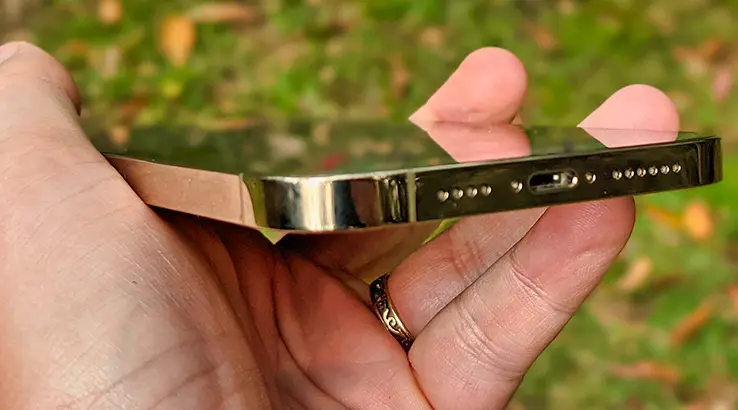
A larger phone always allows designers more space to accommodate larger batteries, and that's certainly what Apple's done in the case of the iPhone 12 Pro Max. While it never talks about absolute battery capacities itself, external teardowns of the iPhone 12 Pro Max reveal that it's packing in a 3,687mAh battery.
That's the largest in any iPhone 12 model, but it's not the largest Apple's ever dropped inside an iPhone. That award goes to 2019's Apple iPhone 11 Pro Max, a phone I adored for its exceptional battery endurance. So what does the drop from the 3,969mAh battery in the iPhone 11 Pro Max to the 3,687mAh battery in the iPhone 12 Pro Max do to its battery life?
Pretty much exactly what you'd expect. I ran the iPhone 12 Pro Max through our standard battery endurance test, streaming a Full HD YouTube video for an hour at maximum brightness and moderate volume, and the iPhone 12 Pro Max fell short of the benchmark set by last year's iPhone, although it still managed to outpace every other iPhone model Apple's released this year:
What I typically look for is for phones to retain above 90% of their battery capacity, and the iPhone 12 Pro Max can certainly do that. Under all but the heaviest loads, a single day's usage is easily achievable, but it's odd to see Apple step backwards in terms of power for its biggest and most expensive handset.
Apple has stuck to using its proprietary Lightning connector for this year's iPhones, and it feels a touch retrograde when you consider that the Pro line iPads are all now USB-C connected.
Charging is still at least swift, and it also supports up to 15W wireless charging, including the use of Apple's new "MagSafe" chargers and magnetically connected products. The one caveat here for the iPhone 12 Pro Max specifically is that connected devices look tiny on the rear of the iPhone 12 Pro Max, and especially so for the MagSafe connected wallet.
Should you buy the iPhone 12 Pro Max?
- Buy it if you want Apple's best cameras.
- Don't buy it if you want the best value iPhone 12 model.
Apple's long had the issue that the price for its biggest phones is a significant barrier for many consumers to leap over. Typically, what it's done is to pack the house with as many additional features and benefits to offset that cost problem.
Does the iPhone 12 Pro Max justify its price? Only really if you want that higher-end camera array, and I can't help but feel that this might only truly reveal itself once Apple's new ProRAW format is available and more pro-level photographers can take advantage of it.
The fact that performance really isn't hugely improved over the iPhone 12 makes that the iPhone to buy in 2020, with the iPhone 12 Pro Max the luxury option, but not the best.
Pricing and availability
Specifications
Display
Camera
Physical Dimensions
Connectivity
Power, storage and battery
Device features
Images: Alex Kidman
More Finder reviews
-
Why I keep coming back to Google’s Pixel Watch 4 (you might disagree)
17 Dec 2025 |
-
The Pixel 10 is the perfect phone for everyday use – here’s why
16 Dec 2025 |
-
Apple iPhone 17 review – Is it the phone of the year?
16 Dec 2025 |
-
iPhone Air review – It’s not what I expected
12 Dec 2025 |
-
iPhone 17 Pro and Pro Max review – At their peak
30 Oct 2025 |
Sources
Your reviews
Alex Finder
Senior editor
You are about to post a question on finder.com.au:
- Do not enter personal information (eg. surname, phone number, bank details) as your question will be made public
- finder.com.au is a financial comparison and information service, not a bank or product provider
- We cannot provide you with personal advice or recommendations
- Your answer might already be waiting – check previous questions below to see if yours has already been asked
Finder only provides general advice and factual information, so consider your own circumstances, or seek advice before you decide to act on our content. By submitting a question, you're accepting our Terms Of Service and Finder Group Privacy & Cookies Policy.
This site is protected by reCAPTCHA and the Privacy Policy and Terms of Service apply.

